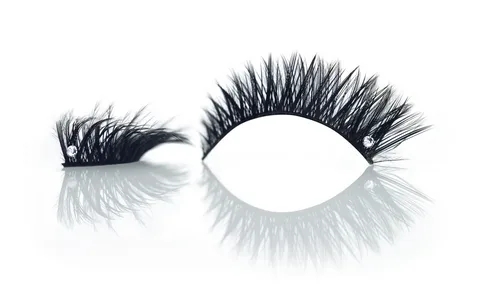False Eyelashes Market insights uncover regional differences in product types and pricing models

The global False Eyelashes Market continues to expand, with regional insights highlighting significant variations in product types, price sensitivity, and consumer expectations across different parts of the world.
North America: Preference for Bold Styles and Premium Products
In the United States and Canada, beauty trends are largely shaped by pop culture, celebrity endorsements, and social media. Consumers here gravitate towards bold, voluminous lashes that make a statement. These lashes are often used for daily wear, especially by makeup enthusiasts and professionals, making performance and longevity top priorities.
North American consumers are also more willing to spend on premium brands. Luxury lashes with reusable designs, magnetic features, and easy-application tools are highly favored, especially among working professionals and influencers. Price points here are higher on average, with added value placed on packaging aesthetics and brand reputation.
Europe: Balance Between Subtlety and Sustainability
European consumers tend to prefer subtle, natural-looking lashes that enhance beauty without appearing too dramatic. Styles that offer a “barely-there” finish or mimic natural lashes are bestsellers in countries like France, Germany, and the Netherlands. There is a strong cultural preference for minimalist makeup looks, which influences lash design demand.
Additionally, Europe has one of the highest demands for sustainable and cruelty-free beauty products. Regulatory frameworks, such as the EU’s ban on animal-tested cosmetics, further support this trend. Pricing models in Europe are balanced—consumers seek quality but are also conscious of value, especially in southern and eastern European regions.
Asia-Pacific: High Volume, Fast Turnover, and Customization
Asia-Pacific represents one of the most dynamic regions in the false eyelashes market. In countries like China, South Korea, and Japan, false eyelashes are widely accepted and used in both everyday looks and high-fashion styling. Consumers in these markets favor lightweight lashes that complement features like monolids or almond-shaped eyes.
South Korea, known for its K-beauty dominance, drives innovation with ultra-natural styles and skin-safe adhesives. Meanwhile, Japan emphasizes precision and comfort, preferring lashes with thin bands and high customizability. China, with its vast consumer base, values affordability and frequent style rotation, creating demand for budget-friendly multi-pack sets.
Pricing models in this region are highly segmented. While premium brands thrive in urban centers, rural and middle-tier markets rely on mass-produced, competitively priced options. Local brands dominate due to better alignment with cultural preferences and localized marketing strategies.
Middle East & Africa: Demand Linked to Cultural Norms and Glamour
In the Middle East, beauty plays a significant cultural role. Consumers across Saudi Arabia, UAE, and Egypt show a strong preference for dramatic, voluminous lashes that enhance the eyes—an important focus in traditional makeup. These lashes are often used for weddings, religious celebrations, and social events.
The premium segment is thriving in the Middle East, with consumers willing to pay higher prices for imported or luxury lashes. International brands with prestige appeal perform well here, especially those offering products with gold-trimmed or jewel-toned packaging.
In Africa, the market is still developing, with growing urbanization and digital connectivity introducing more consumers to global beauty trends. Pricing remains a key factor, but rising awareness and increased access to e-commerce are expected to expand the mid- to high-end segments in the coming years.
Latin America: Beauty Culture and Budget Sensitivity
Countries such as Brazil, Mexico, and Colombia have vibrant beauty cultures. False eyelashes are popular for special occasions, dance performances, and night-outs. Styles that offer flair without heavy volume are in high demand, as users often seek a more flirty or wispy look rather than an overly dramatic one.
However, pricing sensitivity is more prominent here. Consumers often look for affordable options with decent durability. Multi-use lashes and bundle packs are preferred, and brands that can combine value with stylish packaging have a competitive edge.
In recent years, local influencers and beauty vloggers have had a significant impact on product preferences. This has helped shape new trends while supporting domestic lash producers, especially in Brazil and Argentina.
Regional Pricing Models and Distribution Channels
Pricing strategies differ significantly by region. In high-income markets, consumers expect added value in terms of design, longevity, and sustainability. These markets support tiered pricing—basic lines for everyday users, mid-range collections for fashion-forward buyers, and luxury lines for beauty connoisseurs.
In contrast, emerging markets prioritize accessibility. Single-use and multi-pack lashes dominate in price-sensitive areas, often distributed through drugstores, salons, and mobile beauty services. Online channels have leveled the playing field, with e-commerce platforms enabling global reach for local brands and affordable product discovery for consumers.
Localization as a Growth Strategy
Global brands expanding into new territories are now focused on localization. This includes tailoring product lines to fit regional eye shapes, adjusting lash lengths and volumes, and developing packaging that aligns with local aesthetic preferences.
Marketing campaigns are also region-specific. For example, Western brands entering Asia-Pacific markets often collaborate with local influencers or K-beauty experts, while brands in the Middle East partner with regional beauty salons and celebrities.
Adopting regional languages on packaging and offering payment methods that suit local consumer behavior also play critical roles in market penetration.
Conclusion
The false eyelashes market reflects a mosaic of regional beauty ideals, cultural influences, and economic conditions. Product preferences vary dramatically—from minimalist and sustainable styles in Europe to glamorous, dramatic designs in the Middle East and Asia-Pacific. Likewise, pricing models and brand strategies shift to align with local buying power and expectations.
Understanding these regional differences is crucial for brands aiming to expand globally or build deeper relationships with consumers. A one-size-fits-all approach is no longer viable—localized strategies are the future of sustainable market growth.
- Art
- Causes
- Crafts
- Dance
- Drinks
- Film
- Fitness
- Food
- Παιχνίδια
- Gardening
- Health
- Κεντρική Σελίδα
- Literature
- Music
- Networking
- άλλο
- Party
- Religion
- Shopping
- Sports
- Theater
- Wellness


